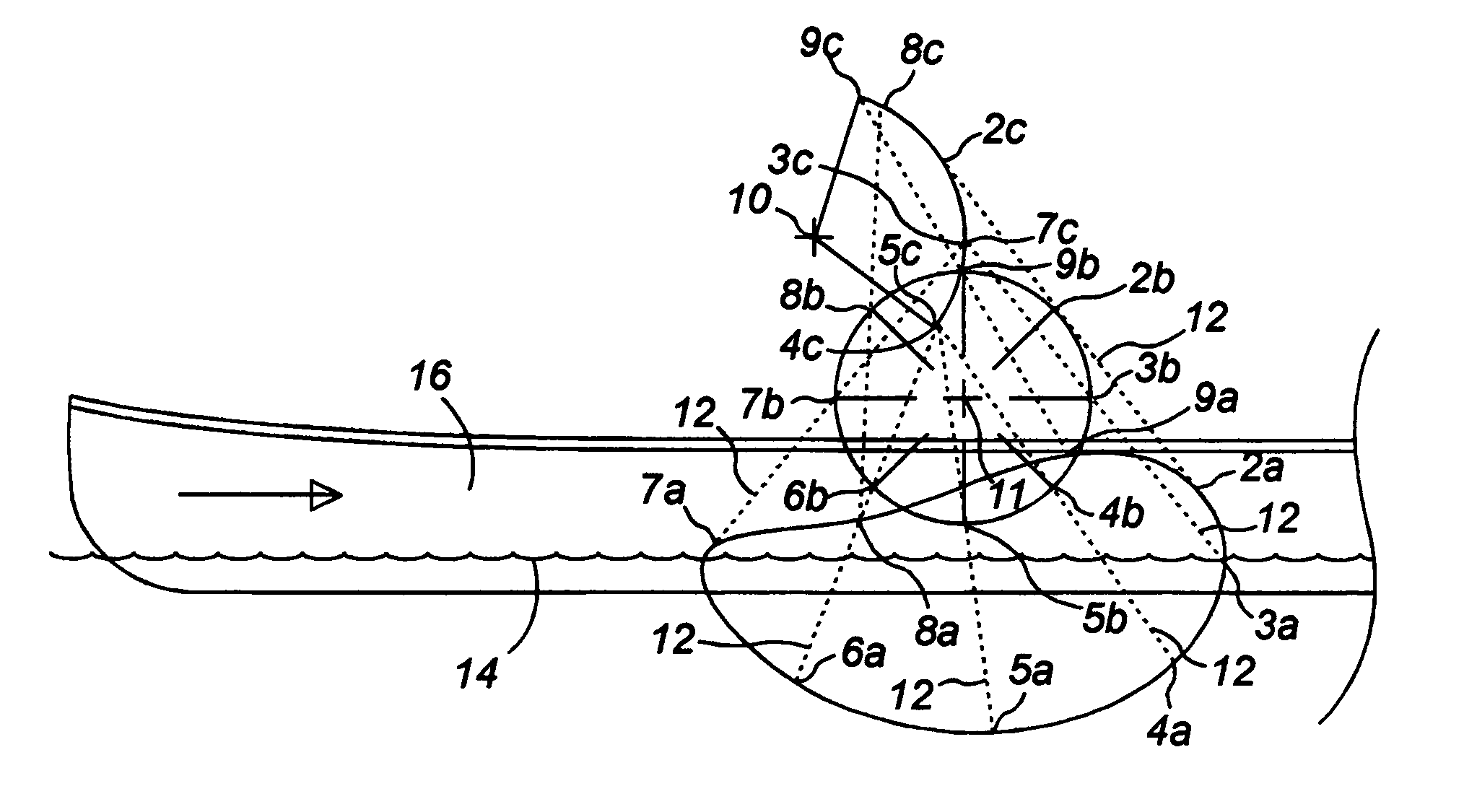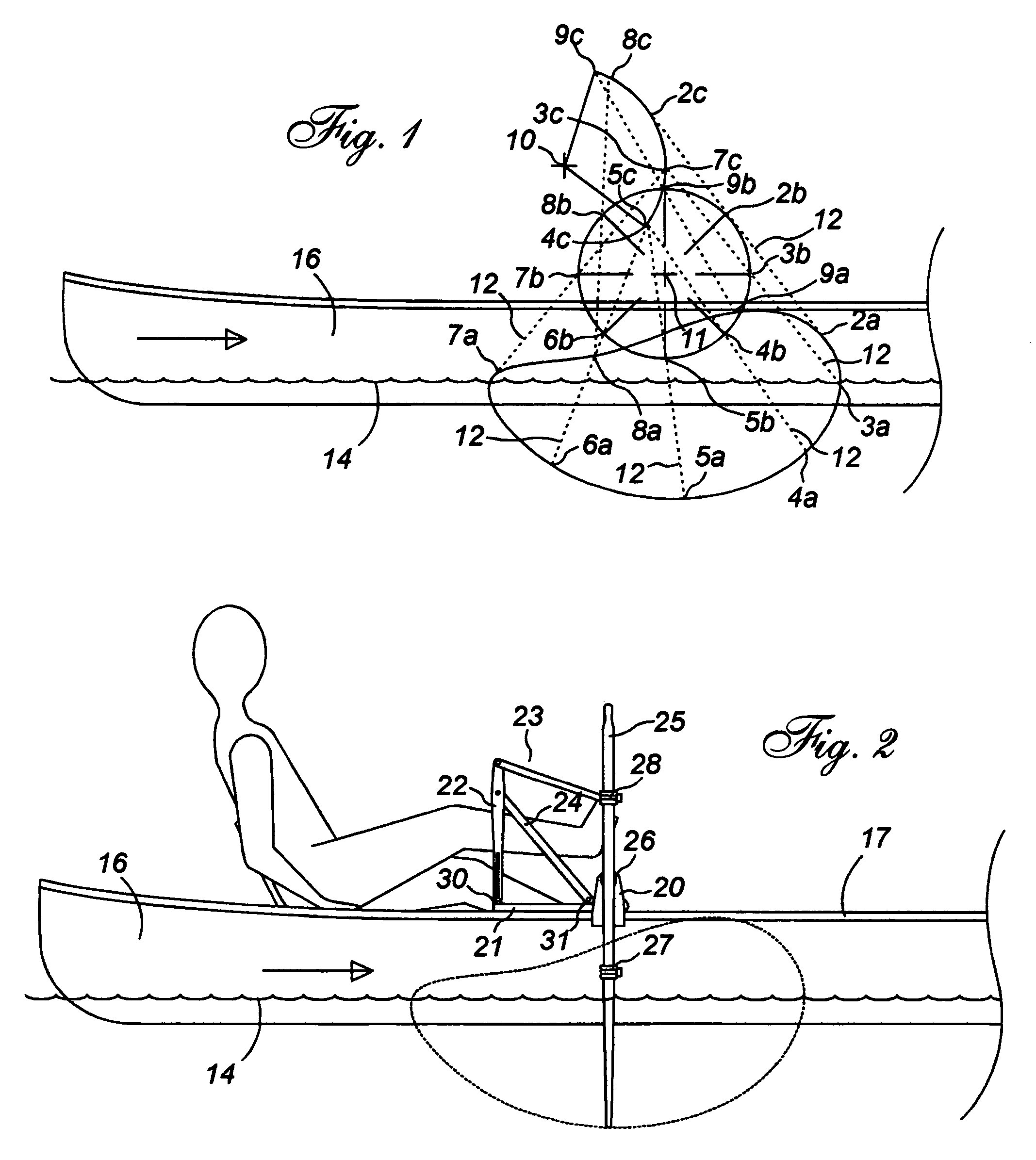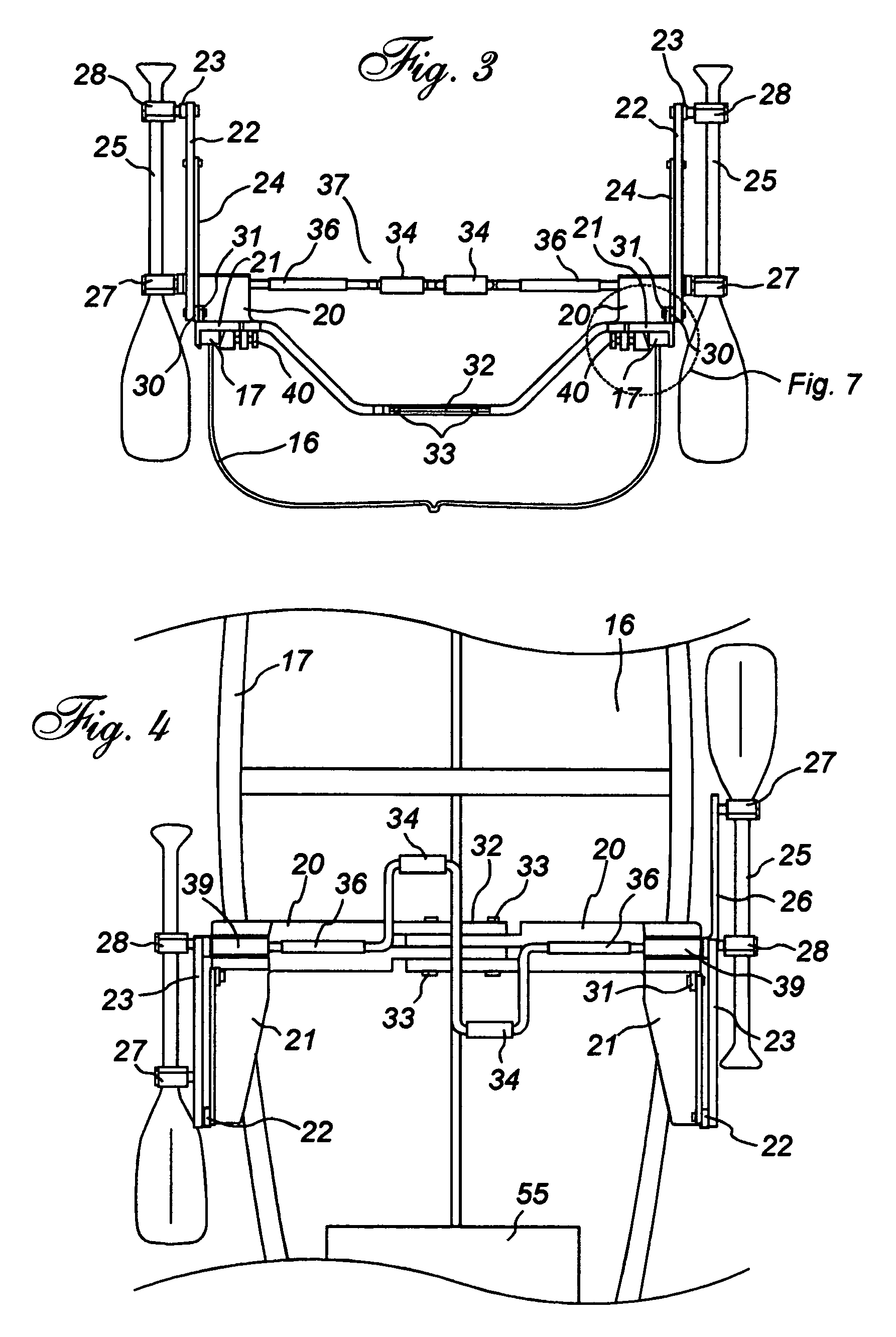Biomechanically correct pedal powered paddling system for small watercrafts
a pedal powered, biomechanical technology, applied in the direction of buoys, propulsive elements, vessel construction, etc., can solve the problems of limiting the flexibility of watercraft travel, limiting the maneuverability of said watercraft, damage to aquatic plants and equipment, etc., to improve the efficiency of power transfer, increase paddle alignment, and reduce drag
- Summary
- Abstract
- Description
- Claims
- Application Information
AI Technical Summary
Benefits of technology
Problems solved by technology
Method used
Image
Examples
Embodiment Construction
[0044]In the following description, similar features in the drawings have been given similar reference numerals.
[0045]Turning to the drawings, in particular, FIG. 1, which illustrates a left side elevation view of the orientational path of the biomechanically correct pedal-powered paddling system for small watercrafts of the present invention wherein members 12 represent the paddle, and each member 12 is of equal length, numerical FIGS. 2x to 9x (where x depict points a, b, and c) represent a fixed point on said paddle, where Xa (where X depicts 2, 3, 4 . . . 9) represents the tip of the paddle, Xb represents the lower pivot clamp fixed to a mid section of the paddle, and Xc represents the upper pivot clamp also fixed to the upper section of said paddle.
[0046]A paddle crank having a non-rotational female end adapted to receive the male end of a drive shaft, and a rotational end adapted to secure to a linkage attaching portion of the above paddle receiving portion rotates at a drive ...
PUM
 Login to View More
Login to View More Abstract
Description
Claims
Application Information
 Login to View More
Login to View More - R&D
- Intellectual Property
- Life Sciences
- Materials
- Tech Scout
- Unparalleled Data Quality
- Higher Quality Content
- 60% Fewer Hallucinations
Browse by: Latest US Patents, China's latest patents, Technical Efficacy Thesaurus, Application Domain, Technology Topic, Popular Technical Reports.
© 2025 PatSnap. All rights reserved.Legal|Privacy policy|Modern Slavery Act Transparency Statement|Sitemap|About US| Contact US: help@patsnap.com



